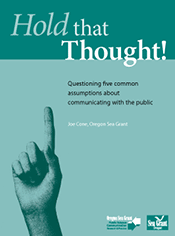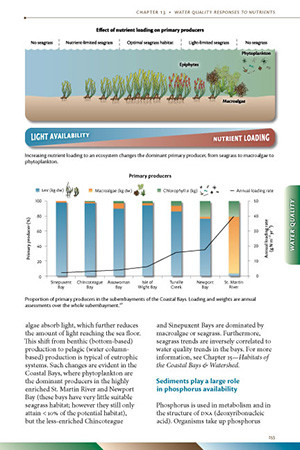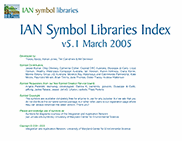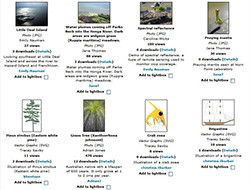Is Science Communication an art?
Bill Dennison ·A publication by Oregon Sea Grant in 2008 entitled "Hold That Thought!: Questioning five common assumptions about communicating with the public" by Joe Cone presents as one of the myths "Science communication is an art". Integration and Application Network (IAN) staff often introduce science communication principles and examples by using the title "Zen and the Art of Science Communication" which does infer that there is an art to science communication. This title pays homage to a popular novel by Robert Pirsig in 1974 titled "Zen and the Art of Motorcycle Maintenance" and also infers that one needs to achieve a zen or attitude to science communication to be effective. But is science communication an art, in which some sort of artistic talent is needed to be effective?
The answer can be yes and no.
The 'yes' part of science communication as an art form relates to the extensive use of various visual elements in science communication products. These visual elements can be in the form of photographs, maps, conceptual diagrams, graphs, tables, video clips, and various combinations of these elements. IAN promotes the extensive use of visual elements to augment text and provide a diversity of visual to cater to different learning modes. Some people really appreciate and understand maps, while others appreciate photographs. Conceptual diagrams can provide the best synthesis for some people, while others prefer tables. The use of color in the visual elements provides a mechanism of adding another dimension to the written or screen version of science communication products. Thus, the combination of colorful graphics and images produces something that is ultimately an art form. Balancing, positioning and arranging the graphics in ways that allow the reader/viewer to gain better understanding and new insights requires an 'eye' for what works and doesn't work.
The 'no' part of science communication as an art form relates to the ability of scientists without artistic training or aptitude to develop effective science communication products. The development of various hardware and software solutions to create and enhance visual elements reduces the need for innate artistic talent. For example, the prevalence of inexpensive digital cameras allows scientists to take multiple auto-balancing photographs to capture a particular event, place or process. Various software can be used to edit and enhance these photographs through cropping, editing, balancing light and color, and straightening. IAN has developed an image library with thousands of free downloadable images, and many other organizations host image libraries. Conceptual diagrams can be adapted or drawn with 'click and drag' software using IAN symbol libraries downloaded for free. Thus, acquisition of visual elements does not require highly specialized equipment apart from a computer with appropriate software. The lack of artistic aptitude can be overcome by using an iterative process of producing science communication products, soliciting feedback and making revisions.
Overall, good science communication cannot overcome bad science. Artists cannot become scientists without the extensive training that scientists receive. Conversely, scientists are not artists without the training and practice that artists receive. Yet, science communication can blend the two types of human endeavor; art and science. Both art and science are creative activities that allow humans to make sense of their surrounding worlds. Art and science both build on the work of others and society celebrates those whose works provide profound, lasting impressions. With some notable exceptions (e.g., Leonardo de Vinci), few people really excel at both art and science. Yet, the more that scientists incorporate art into their works, the better the chance that the question "Is science communication an art?" will become moot.
About the author
Bill Dennison

Dr. Bill Dennison is a Professor of Marine Science and Vice President for Science Application at the University of Maryland Center for Environmental Science.





